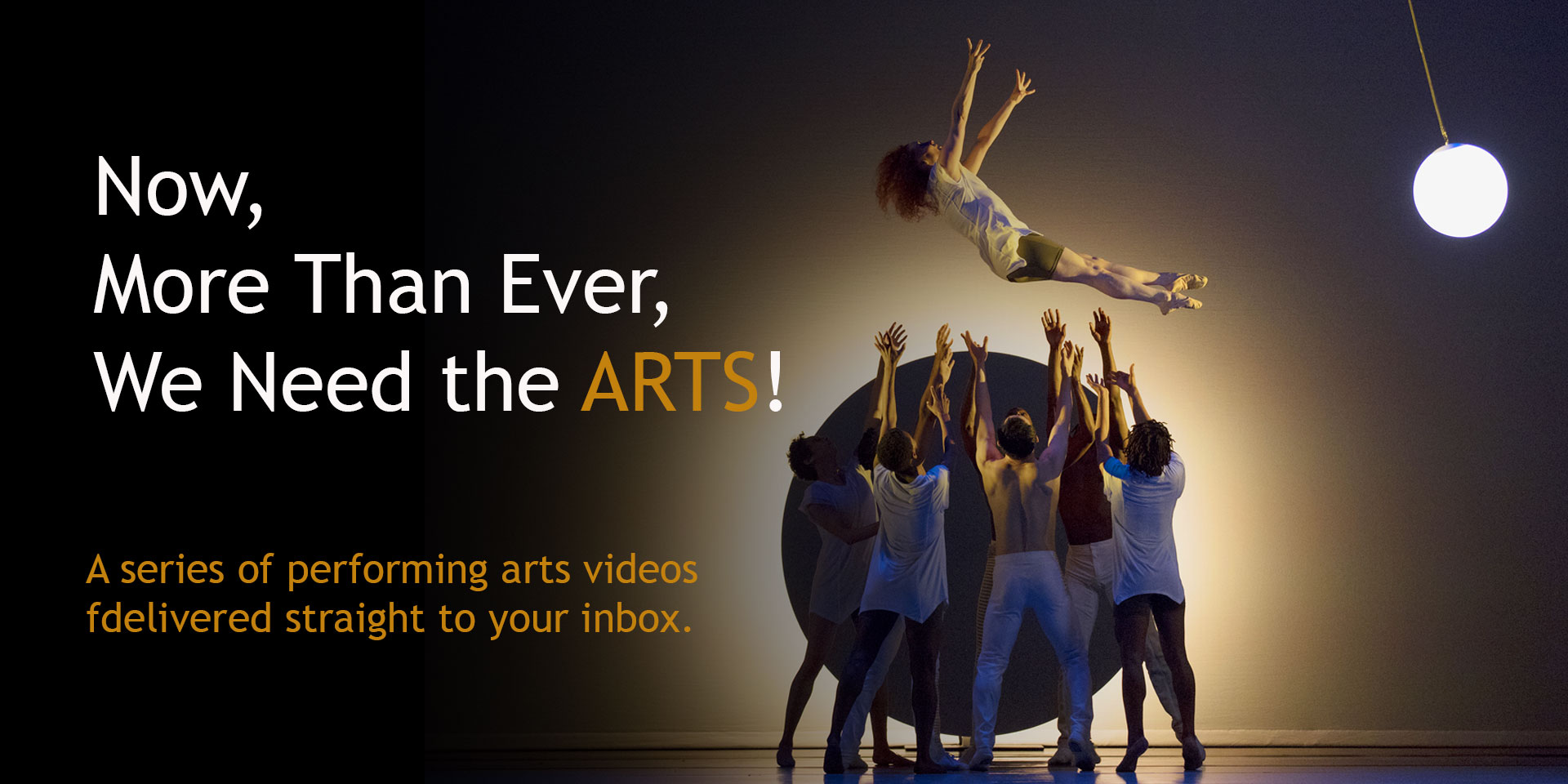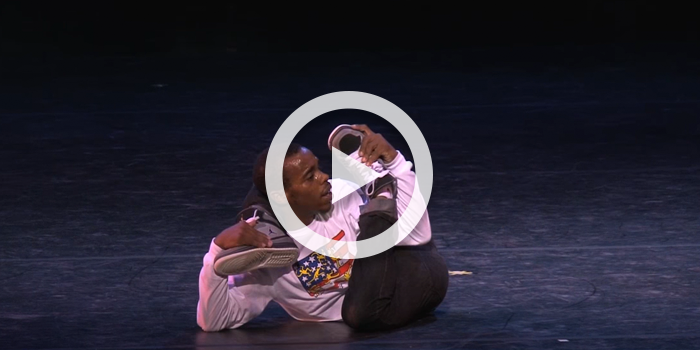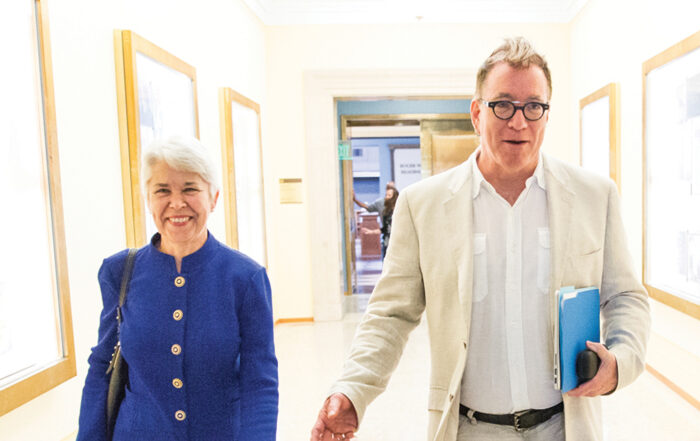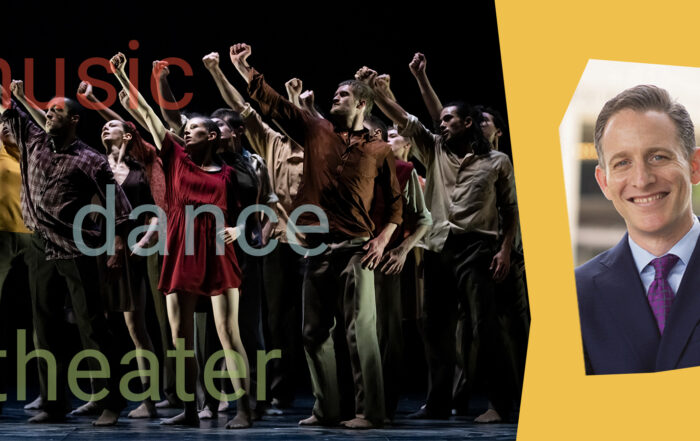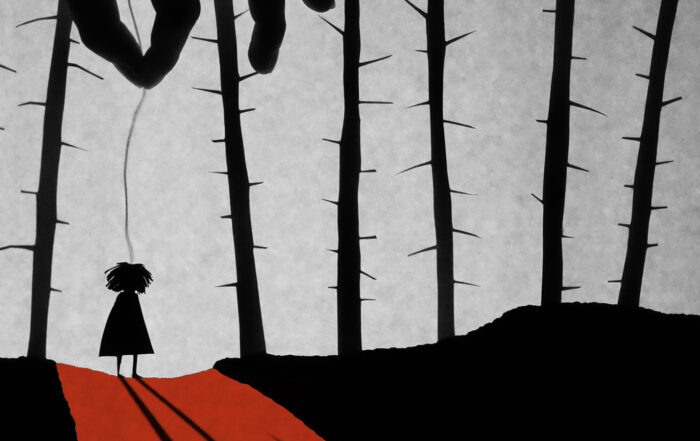In this issue: Two short works by Meredith Monk; Ginette Neveu/ Chausson’s Poème; Toumani Diabaté/“Cantelowes” from The Mandé Variations; Jessye Norman/Purcell’s “When I am laid in earth” from Dido and Aeneas; Dover Quartet and cellist Matt Haimovitz/Schubert’s Adagio from the String Quintet in C major
Now, More Than Ever: Issue 7
Meredith Monk: Two short works
“Skeleton Lines” is taken from Impermanence, a larger piece created following the death of Monk’s longtime partner, and it’s a perfect example of how her works are conceived as organic combinations of music, dance, and theater, albeit in nontraditional forms. Note the specific physical vocabulary of the performers, contributions that are both simple and touching, even when they slip into the comical and absurd. Monk’s realization here is that nothing is forever, that everything is in a constant state of change. “Panda Chant II” is a mesmerizing excerpt from the “science fiction musical spectacle” The Games, written by Monk (with Ping Chong), and featuring Monk herself (in the center), members of her ensemble, and a student choir from Montclair State University in New Jersey. What first appears simple soon reveals itself to be packed with energy and tension (the music is in 4/4 but the movement is in 6/8). When the ululations enter, it feels a bit like a folk song from some ancient tradition.
Chausson: Poème, Op. 25
Ginette Neveu, violin
Try running a Google search for video clips of the exceptional French violinist Ginette Neveu and you’ll quickly find yourself running up against brick walls—there really isn’t much to see. But here, in this very short sample, you can get some sense of her famous intensity as a performer, as well as her intimidating physical presence (she’s over six feet in height, which makes the violin look small in her hands). An incredible prodigy, Neveu won the prestigious Wieniawski Violin Competition in Warsaw at the age of 15 (David Oistrakh, then 27, came in second!). With this victory came a series of concert engagements that were cut short by the start of World War II. Neveu was able to restart her career in 1946 and was enjoying real success when a tragic plane crash ended her life three years later. She was very closely identified with this piece, music that is hyper-emotive and brooding in a very late Romantic way and something that can easily descend into the mawkish in less capable hands. (Here is a complete 1946 audio recording of the violinist with the London Philharmonia Orchestra under the baton of Issay Alexandrovich Dobrowen. The soloist is definitely the protagonist here and it’s through Neveu’s intensity and artistry that the performance becomes captivating—in spite of the many shortcomings of both the orchestra and the recording quality.)
“Cantelowes” from The Mandé Variations
Toumani Diabaté, kora
Toumani Diabaté, the world’s most famous living kora virtuoso, descends from a long line of musicians. (His father and son are also very famous players.) When I first heard the sounds produced by this West African instrument—a typically 21-stringed hybrid of harp and lute created from a large gourd—my first thought was that they had to be synthesized, so otherworldly is their quality. The music actually seems to float (again, something outside of time) from the instrument, especially in the hands of a master like Diabaté. Apparently, this selection is based on a love song. There’s something so meditative here that it’s easy to become transfixed, especially as most of the finger work is not visible to the audience. What an incredible juxtaposition of stillness and complexity!
Purcell: “When I am laid in earth”
from Dido and Aeneas
Jessye Norman, soprano
English Chamber Orchestra
Raymond Leppard, conductor
I’ve never met anyone with such an uncanny ability, through the sheer force of personality, to command the attention of an audience—whether in the most modest of settings or the grandest of opera houses. I worked often with Jessye Norman during my 12 years at Carnegie Hall and for much of that time, she was always “Miss Norman.” But one evening, at a dinner party, I approached her, asking, “Miss Norman, is there anything I can get you?” I’ll never forget that she turned to me, looked me straight in the eye, and said—with utter seriousness—“Who is this ‘Miss Norman’? It’s Jessye.” This legendary artist always responded and performed according to her own internal sense of time, her own personal logic—something that was sometimes unclear in the moment but that would always be vindicated in retrospect, in performances of utter magnetism and majesty. She may be lip-synching here, in a somewhat strange but nonetheless affecting portrait of her professional and private life directed by the German filmmaker Andre Heller, but the featured vocal performances are among her favorites (and best). When you listened to Norman sing, you always had a sense that “this is right; this is exactly how it should sound”—nowhere more so than in this splendid rendition of Purcell’s breathtaking “When I’m laid in earth” from Dido and Aeneas. “Remember me. Remember me,” Norman/Dido pleads: words made all the more poignant given this great artist’s death only last fall.
Schubert: Adagio from String Quintet in C major, D. 956
Dover Quartet
Matt Haimovitz, cello
One of the supreme masterpieces in all of chamber music, the Quintet in C major was composed during the last three months of Schubert’s life, a time of incredible physical agony (brought on, we can guess, by both the syphilis that would kill him and the mercury treatments then employed by doctors). The composer almost certainly would never have heard it performed, but I like to think he would have been pleased by this extraordinary performance by the young Dover Quartet—four Americans who met as students at the Curtis Institute and have been performing together since graduating—here joined by guest cellist Matt Haimovitz at Montana’s Tippet Rise Art Center. When I listen to this quintet, I’m reminded of Schumann’s famous quote regarding Schubert’s Ninth Symphony, when he praised its “heavenly length.” That’s exactly what I hear in this work—because here you encounter an entire universe of sound. This slow movement can appear as if it’s easy to play, but the amount of control necessary to avoid interrupting the flowing line, while still coping with the technical capabilities of the instruments, makes it one of the most difficult of all chamber music pieces. (Just watch how slowly the second violinist and violist move their bows at the beginning; if there were any break in the sound, the entire effect would be ruined, instantaneously.) Then there’s the juxtaposition of the stormy central section with the stillness at either end. It’s hard not to view this as an autobiographical moment, knowing that Schubert must have been aware he faced a death sentence due to his illness, and chose to expend much of his remaining energy composing music that is so sublime and reflective. When you reach that agitated middle section, it seems as if he is recounting his own personal struggle. And when it resolves, it carries with it the memory of that storm. I think that Schubert is telling us that moments of joy and peace carry with them shadows of our most difficult experiences. Be very patient with this work; it will reward you.
Now, More Than Ever Full Playlist
Now, More Than Ever Spotify Playlist


